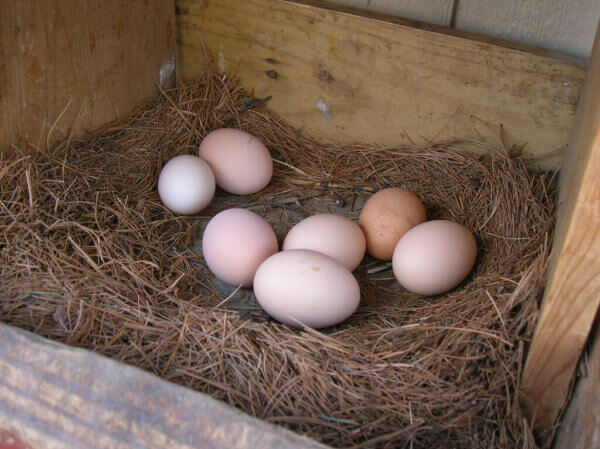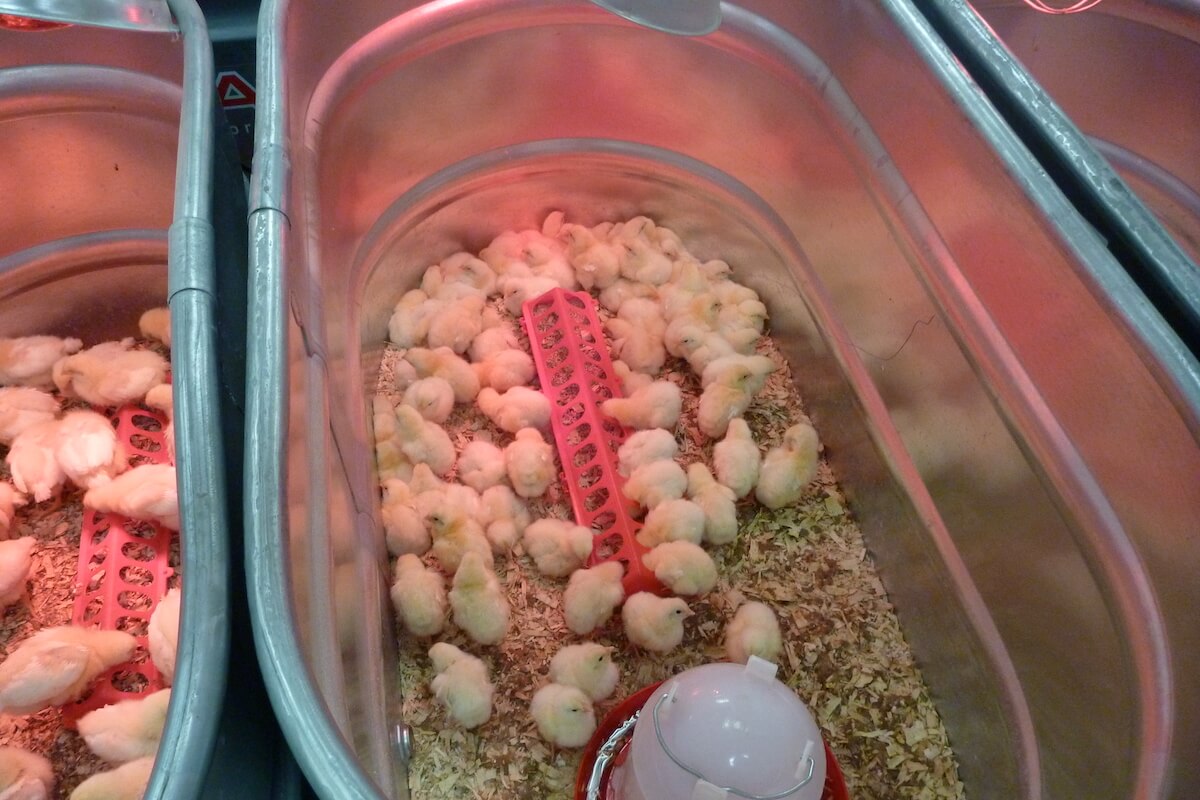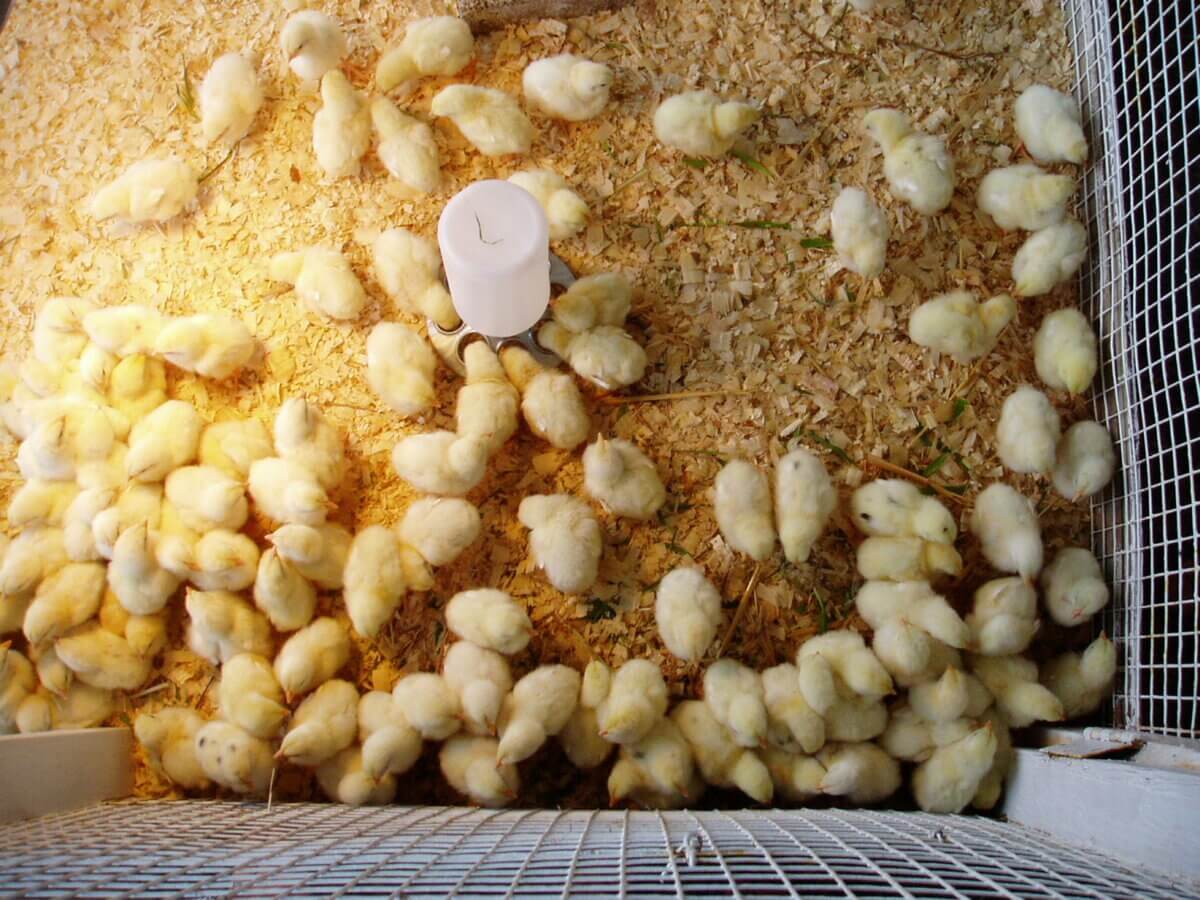Raising your own backyard chickens makes you feel connected to the source of your food, and proud of every egg you eat.
There are lots of resources to help you get started if you are a first-time chicken owner. Here, we will look at where and how to go about buying baby chicks. Even if you’ve had chickens before, you might be considering alternative ways to buy your next batch of babies.
Why Buy Baby Chicks Rather Than Hens?
Buying hens who are already laying is more expensive than buying baby chicks. You’re basically paying someone else to care for the chicks for the first 6 months. Depending on where you live, laying hens can cost anywhere from $20 to $35 each. On the other hand, if you buy chicks you will be spending money to feed them for about four to six months before they start laying, which isn’t free either.
Baby chicks don’t eat as much as grown hens, but they grow fast and feed can get expensive, especially if you’re buying organic. If eggs are your primary goal, buy pullets. Pullets are adolescent hens, typically 15-22 weeks old, who are about to start laying around 24 weeks in age. You can also purchase laying hens older than that, but hens are most productive in their first 12 to 18 months of laying. An older hen just won’t give you as many eggs.

However, many people who raise backyard chickens want the connection to their animals and the experience of caring for baby chicks. Some breeds are friendlier than others, and if chicks are handled gently from an early age, some become attached to humans. I have known some very friendly chickens!
Raising chicks is also a great family activity. Chickens are relatively low maintenance, call for easy maintenance chores that kids can do, and deliver tangible rewards—eggs!
The earlier in the season that you get your chicks, the sooner you will get eggs, but you’ll have lots of things to consider first. Where will you buy your chicks? How old will they be? Can I hatch my own?
Buying Baby Chicks At Farm And Garden Stores
First-time chicken owners should start at a local farm and garden store. Store staff can answer most questions you have about raising baby chicks. Usually they will know a lot about the particular breeds they are selling, like how aggressive they are, and how well they lay. Most farm and garden stores stock live chicks during the spring, but call ahead to find out what breeds they have and when they get new shipments.
The store will also have feed, heat lamps, bedding, and everything else you need to get started. It’s a great one-stop destination.

Another important benefit of buying baby chicks from a store is that the chicks are going to be slightly older, since stores get large batches of chicks but don’t sell them all at once. An older chick is healthier and more resilient. Like all babies, very young chicks are fragile and hatcheries typically ship chicks at just a few days old.
Even a week makes a big difference in how much care a baby chick will need. I got my first chicks from a very small local farm store which didn’t sell chicks very fast, so the chickens were almost three weeks old when I got them. They were healthy and energetic and needed lots less care when I took them home.
Mail Order Chicks
To save money, you can order chicks from the same hatcheries that garden stores buy from at a better price. This is an inexpensive way to expand your chicken operation, but there are serious drawbacks.
Often, hatcheries have minimum orders of 25 or 50 baby chicks. Twenty five chickens sounds like a lot, but it’s actually pretty manageable, and if you cannot have 25 for space or zoning reasons, you can go in on an order like this with other friends. Typically, the more chicks you order at one time, the cheaper each chick is. Now the question is – how many chickens do I buy?
The number of baby chicks you order depends on what you are doing with them. Depending on her age, breed, and the time of year, a healthy hen lays anywhere between three and six days out of seven. With six birds in their laying prime, you can generally expect to get four eggs a day.

How many people are you feeding? How many eggs does your family eat? (Would you eat more if they were free in your backyard? Probably.) A little math will sort that out. And if you have too many, you will probably find it easy to give them away!
Don’t get more chicks than will be able fit in your coop and run once they grow up. Also, city and county laws may limit how many chickens you can keep. In general, 10 square feet per chicken or more is a good estimate of the minimum space you’ll need for your run.
One serious thing you must consider: Because baby chicks are shipped so young, a few of them won’t survive the journey. This is true also in the shipments that go to farm stores, but it can be emotionally challenging to deal with in your home, especially for children, who are looking forward to getting a box of chicks in the mail. Deaths during shipment can also cause problems if you are aiming for a specific number of birds. In that case, order a few more chicks than you need.
Chicken Hatchery Practices
Recently, animal rights activists have released sensational videos revealing crowded, dirty conditions and inhumane slaughter of unwanted chicks.
The basic problem is that some hatcheries produce more chicks than they can sell, and those chicks are killed. Most large hatcheries sell all-female batches, which means up to half the chicks are extra, since raising those male birds for their meat isn’t profitable. Also, in order to have chicks available at short notice, hatcheries estimate demand. When they have chicks they can’t sell, those chicks are also killed.
Many other hatchery practices are less problematic than they seem. Chicks crowd together naturally for warmth and protection, and your backyard chicken coop is probably just as dirty as a crowded hatchery unless you clean it religiously. If you’re ordering online, order from established hatcheries that are open about their facilities, such as this video tour from Murray McMurray:
Eggs And Home Hatching Of Baby Chicks
One way to entirely avoid the moral complications of hatchery practices is to hatch your chicks at home. Most hatcheries also sell fertilized eggs by the dozen—often to elementary schools who hatch them as a class project.
You can also get fertilized eggs from anyone who keeps laying hens and a rooster. The fresher the eggs are, the more likely they are to be viable. If you get eggs from a hatchery, because they are jostled and disturbed during shipping, not all of your eggs may hatch. We’ve seen reports online of as few as 50% of eggs hatching. Even with the best care possible, you are likely to lose a chick or two once they are hatched.
Hatching eggs is time-consuming and labor-intensive, but not actually very complicated. There are just three things you need to control: temperature, humidity, and egg rotation.
Options for egg incubators range from DIY to entirely automated, and the cost varies accordingly — $90 to $180 for the examples shown.
All these options can feel overwhelming. As with many aspects of urban farming, there is pressure to get it “right” as a beginner, but don’t stress about it too much. The bottom line is that buying your chicks is not nearly as important as giving them a healthy, happy home. Look for our next article on caring for new chicks at home.
Where do you buy your chicks? Let us know in the comments.










































i want to buy chick
same bro
Nice article
Great article – thank you. We are city dwellers lucky enough to have a quiet/treed yard we think will be a good spot for a chicken coop.
I guess it comes down to math and timing.
If I want to care for the chicks/pullets for 1 month before they start to lay eggs (as part of the experience of having the chickens), and we hope to have eggs by June 1st…then we need to buy pullets on May 1st that are approximately 20wks old. Right?
I need more baby female chick’s in the spring. How much for 3 baby hens?